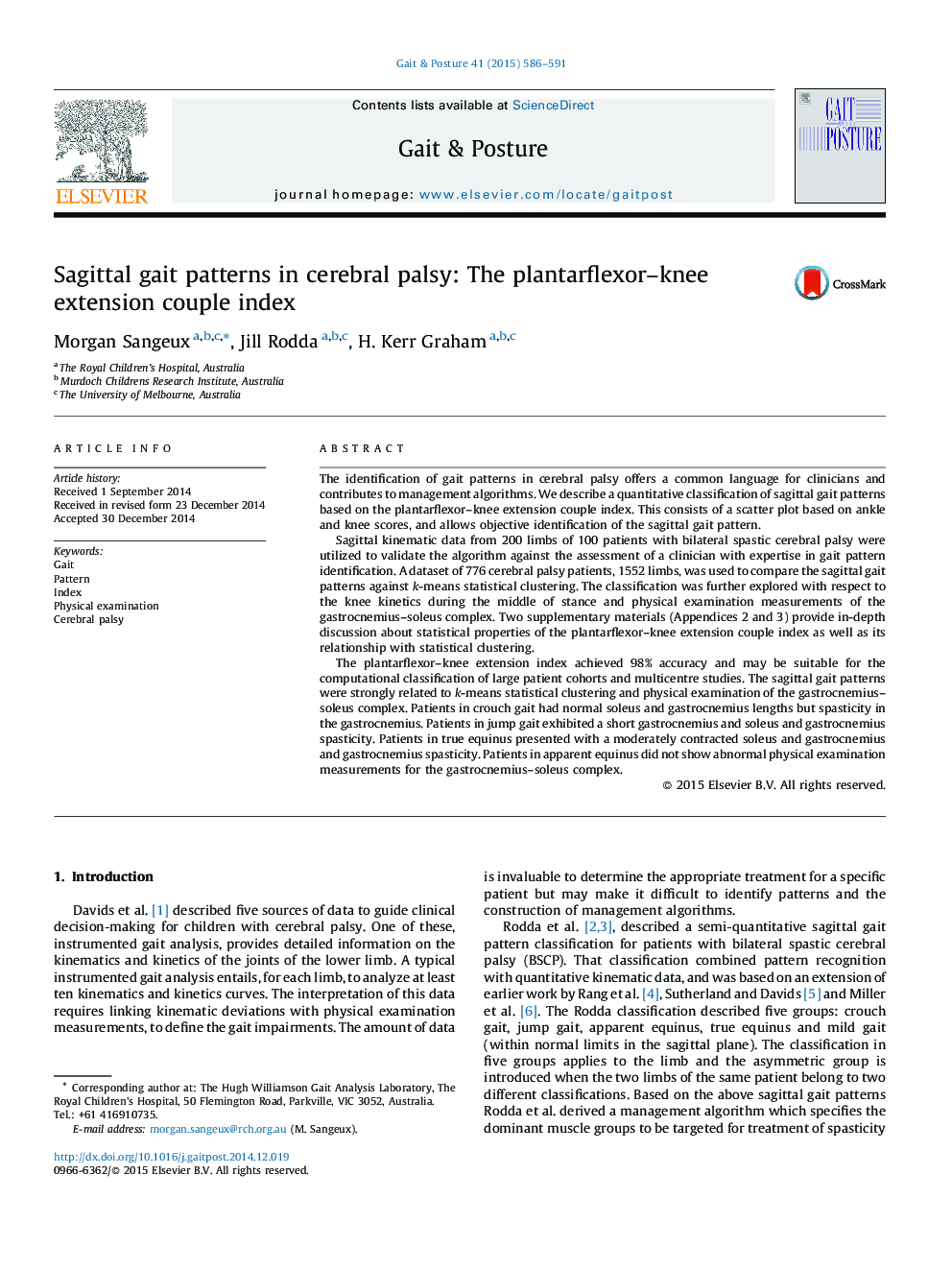| کد مقاله | کد نشریه | سال انتشار | مقاله انگلیسی | نسخه تمام متن |
|---|---|---|---|---|
| 6206153 | 1265640 | 2015 | 6 صفحه PDF | دانلود رایگان |
- Quantitative identification of sagittal gait patterns.
- Correlation between clinical gait patterns and statistical gait patterns.
- Correlation between patterns and knee kinetics.
- Correlation between patterns and physical examination of plantarflexors.
The identification of gait patterns in cerebral palsy offers a common language for clinicians and contributes to management algorithms. We describe a quantitative classification of sagittal gait patterns based on the plantarflexor-knee extension couple index. This consists of a scatter plot based on ankle and knee scores, and allows objective identification of the sagittal gait pattern.Sagittal kinematic data from 200 limbs of 100 patients with bilateral spastic cerebral palsy were utilized to validate the algorithm against the assessment of a clinician with expertise in gait pattern identification. A dataset of 776 cerebral palsy patients, 1552 limbs, was used to compare the sagittal gait patterns against k-means statistical clustering. The classification was further explored with respect to the knee kinetics during the middle of stance and physical examination measurements of the gastrocnemius-soleus complex. Two supplementary materials (Appendices 2 and 3) provide in-depth discussion about statistical properties of the plantarflexor-knee extension couple index as well as its relationship with statistical clustering.The plantarflexor-knee extension index achieved 98% accuracy and may be suitable for the computational classification of large patient cohorts and multicentre studies. The sagittal gait patterns were strongly related to k-means statistical clustering and physical examination of the gastrocnemius-soleus complex. Patients in crouch gait had normal soleus and gastrocnemius lengths but spasticity in the gastrocnemius. Patients in jump gait exhibited a short gastrocnemius and soleus and gastrocnemius spasticity. Patients in true equinus presented with a moderately contracted soleus and gastrocnemius and gastrocnemius spasticity. Patients in apparent equinus did not show abnormal physical examination measurements for the gastrocnemius-soleus complex.
Journal: Gait & Posture - Volume 41, Issue 2, February 2015, Pages 586-591
